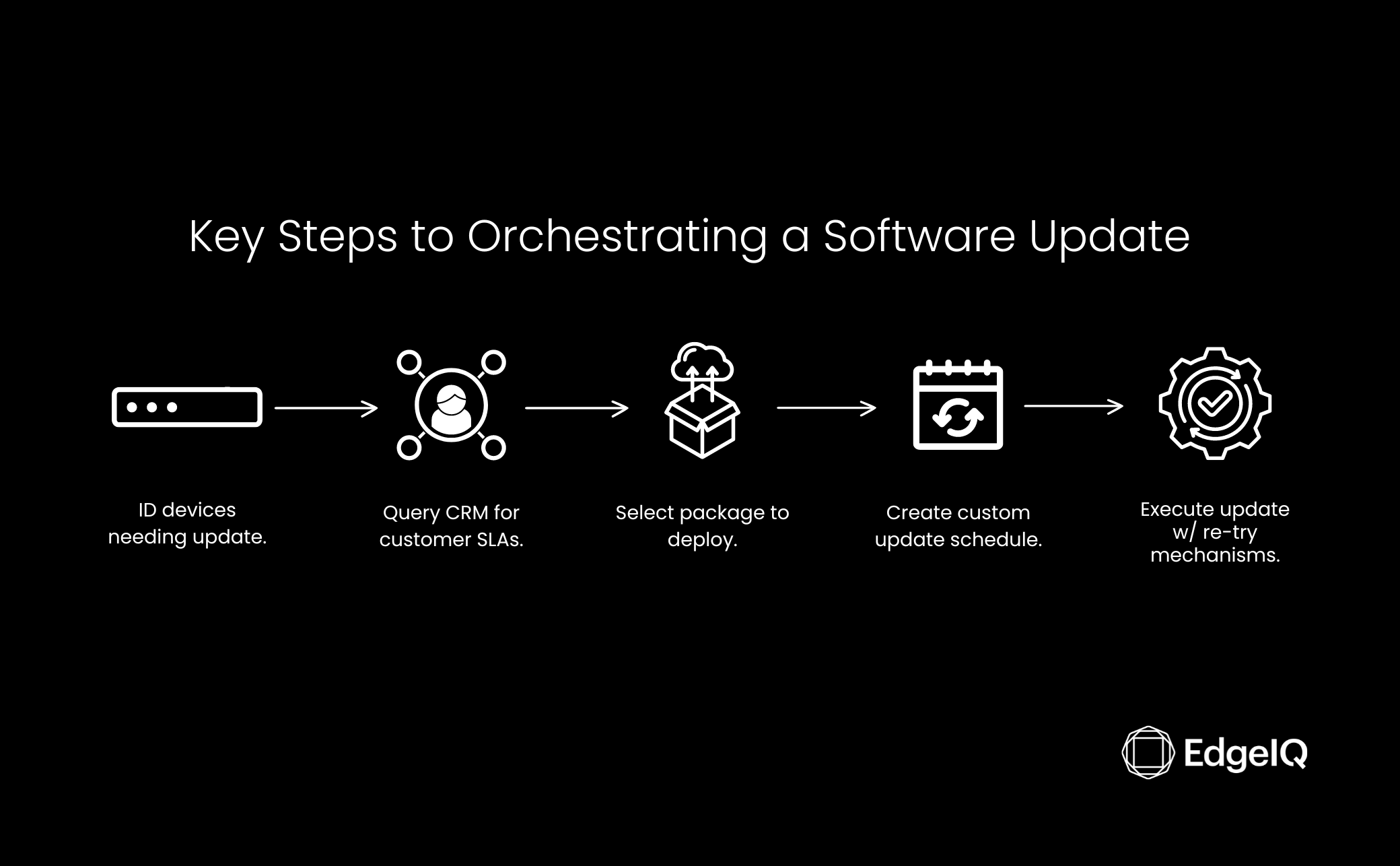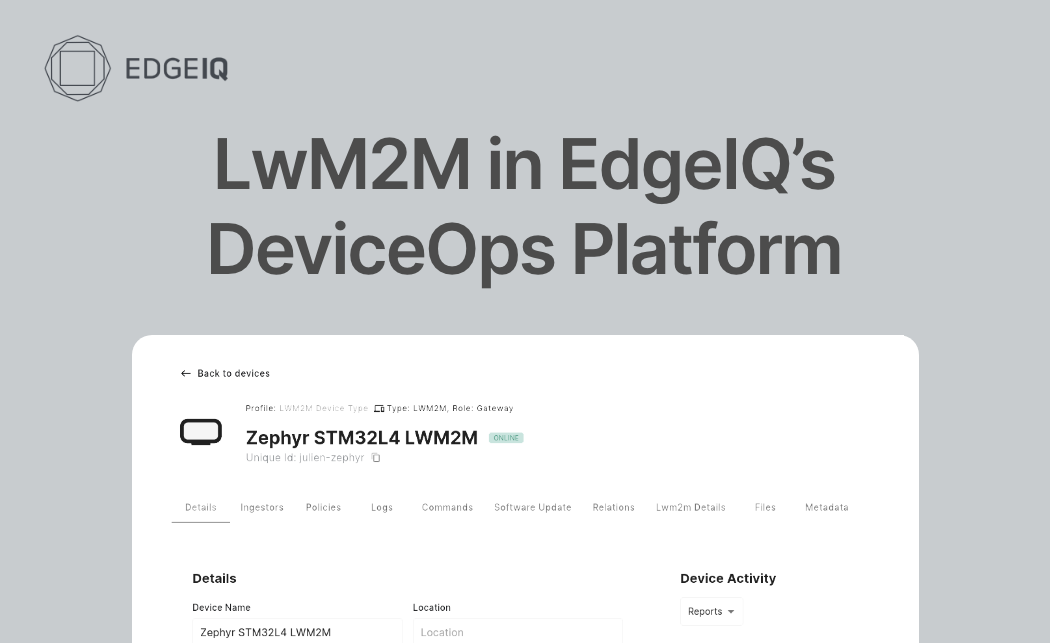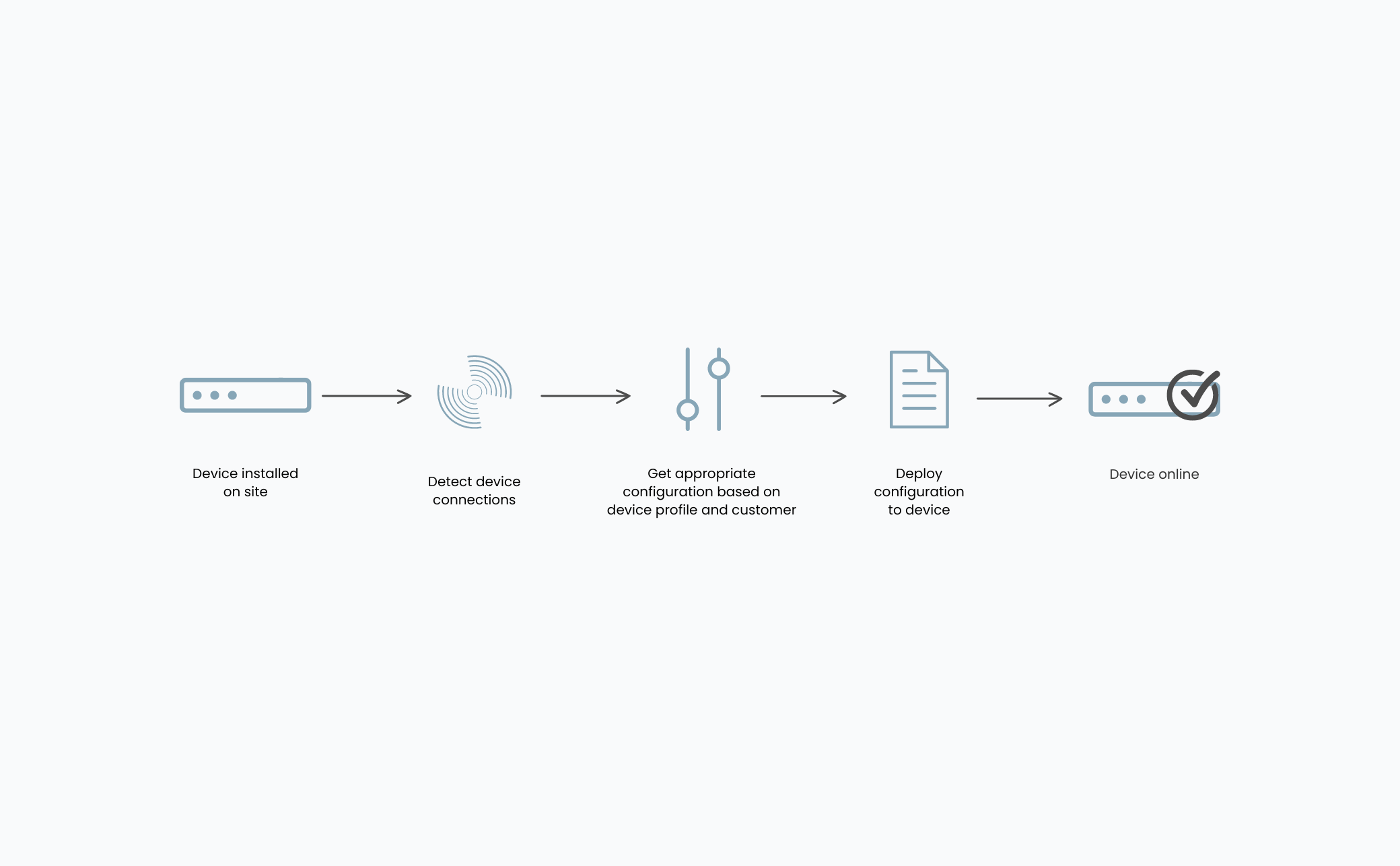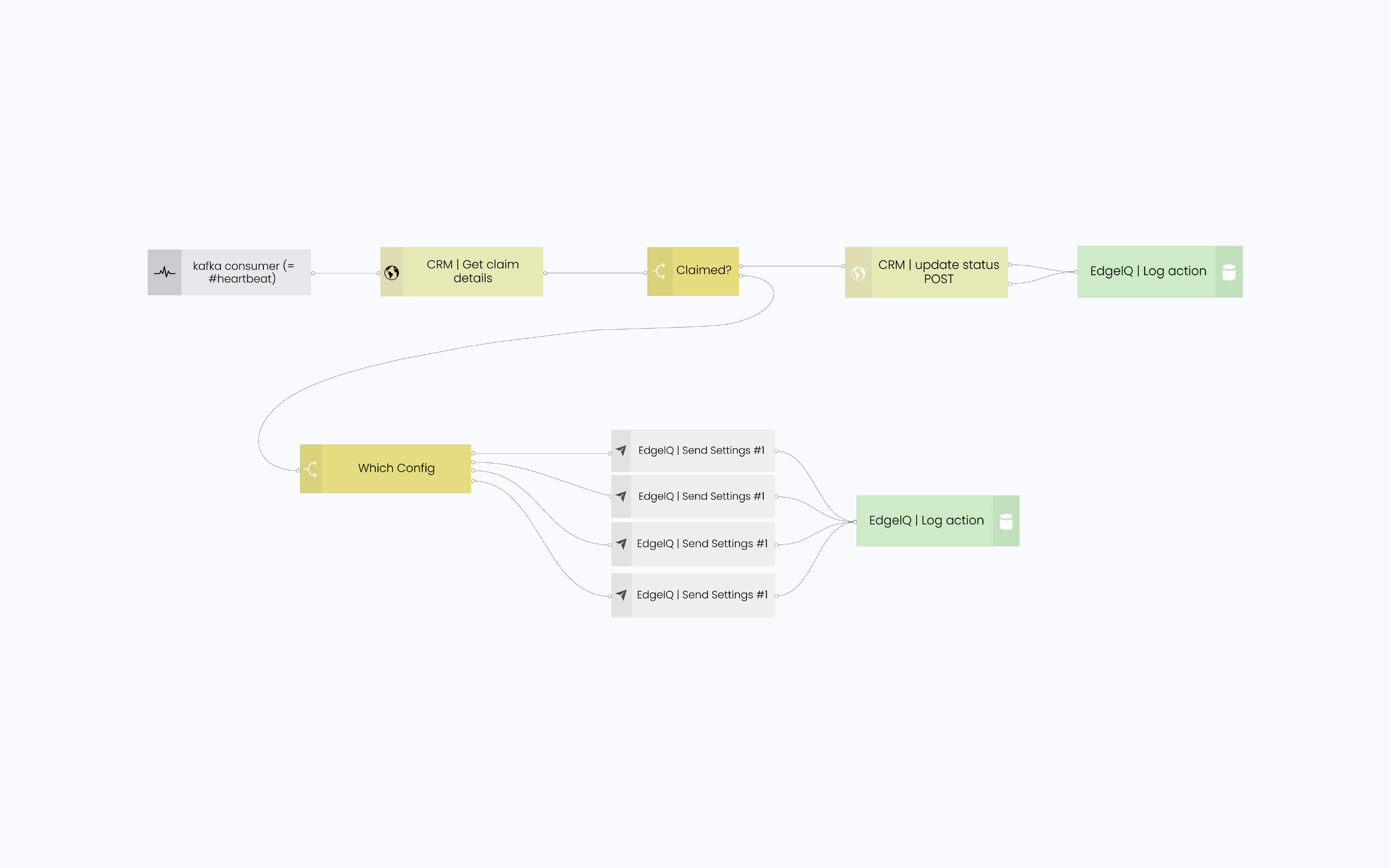Connected IoT products often have lifespans that outlive their original software, requiring the ability to deploy new software over-the-air (OTA). Firmware updates, security patches, new features, bug fixes, and even new AI models for edge computing all need to be deployed to connected devices in the field. It's clear that any solution managing connected devices, must be able to accommodate more than just a firmware update and be flexible enough to deploy any piece of software.
However, knowing what to update is only half the challenge. Equally important is determining when you can update the device without impacting service availability or critical customer use cases. Customer SLAs, purchased features, and usage patterns all factor into the optimal update schedule, turning a seemingly simple update into a complex orchestration challenge unique to each device and customer.
Orchestrating a software update requires several key steps:
1. Identifying the specific devices needing updates.
2. Querying CRM data to determine customer entitlements and SLAs.
3. Selecting the appropriate software package(s) to deploy.
4. Creating a custom update schedule factoring in customer restrictions.
5. Executing the update with built-in retry mechanisms.
Getting any of these steps wrong can lead to a poor customer experience, such as deploying features customers haven't purchased. Automotive OTA updates provide one such example. The customer is delighted at first when they discover new capabilities they weren't expecting. That delight turns to frustration and a soured perception of the manufacturer when, inevitably, the unpaid features are revoked from the customer's automobile. Properly orchestrated updates don't create errors like this, preserving and improving the customer relationship.
Platforms like EdgeIQ allow customized low-code workflows to orchestrate updates by integrating with customer systems and using that data to deliver the right updates at the right times. As requirements evolve, workflows can be easily adapted to maintain a tailored experience for each customer's unique needs.
Ultimately, as connected product use cases evolve and become more complex, the ability to orchestrate complex and customer specific workflows will only grow more urgent. Those Connected Product businesses that adapt and focus on orchestrating customer outcomes today, will be ready to be the leaders of the Connected Product Economy tomorrow.





